| |||||
| Decades: | |||||
|---|---|---|---|---|---|
| See also: | Other events of 1422 History of France • Timeline • Years | ||||
Events from the year 1422 in France
| |||||
| Decades: | |||||
|---|---|---|---|---|---|
| See also: | Other events of 1422 History of France • Timeline • Years | ||||
Events from the year 1422 in France

Year 1422 (MCDXXII) was a common year starting on Thursday of the Julian calendar.
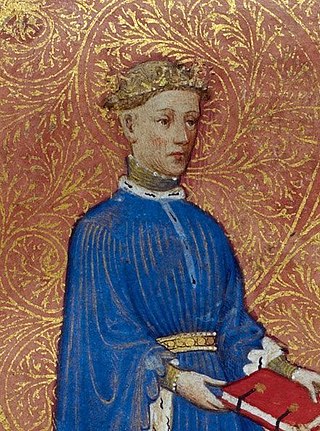
Henry V, also called Henry of Monmouth, was King of England from 1413 until his death in 1422. Despite his relatively short reign, Henry's outstanding military successes in the Hundred Years' War against France made England one of the strongest military powers in Europe. Immortalised in Shakespeare's "Henriad" plays, Henry is known and celebrated as one of the greatest warrior-kings of medieval England.

Henry VI was King of England from 1422 to 1461 and again from 1470 to 1471, and disputed King of France from 1422 to 1453. The only child of Henry V, he succeeded to the English throne at the age of nine months upon his father's death, and succeeded to the French throne on the death of his maternal grandfather, Charles VI, shortly afterwards.
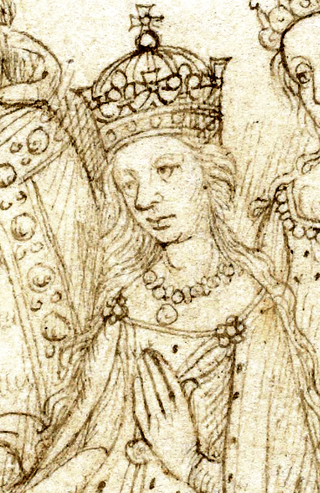
Catherine of Valois or Catherine of France was Queen of England from 1420 until 1422. A daughter of Charles VI of France, she was married to Henry V of England and gave birth to his heir Henry VI of England. Catherine's marriage was part of a plan to eventually place Henry V on the throne of France, and perhaps end what is now known as the Hundred Years' War, but although her son Henry VI was later crowned in Paris, this ultimately failed.
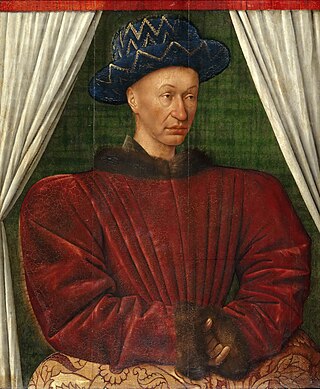
Charles VII, called the Victorious or the Well-Served, was King of France from 1422 to his death in 1461.

Charles VI, nicknamed the Beloved and later the Mad, was King of France from 1380 until his death in 1422. He is known for his mental illness and psychotic episodes that plagued him throughout his life.

Philip III was Duke of Burgundy from 1419 until his death. He was a member of a cadet line of the Valois dynasty, to which all 15th-century kings of France belonged. During his reign, the Burgundian State reached the apex of its prosperity and prestige, and became a leading centre of the arts.
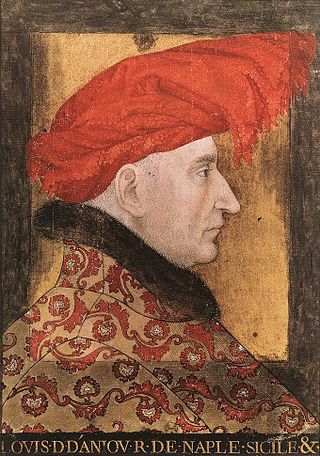
Louis II was Duke of Anjou and Count of Provence from 1384 to 1417; he claimed the Kingdom of Naples, but only ruled parts of the kingdom from 1390 to 1399. His father, Louis I of Anjou—the founder of the House of Valois-Anjou—was a younger son of King John II of France and the adopted son of Queen Joanna I of Naples. When his father died during a military campaign in Naples in 1384, Louis II was still a child. He inherited Anjou from his father, but his mother, Marie of Blois, could not convince his uncles, John, Duke of Berry and Philip II, Duke of Burgundy, to continue her husband's war for Naples. The Provençal nobles and towns refused to acknowledge Louis II as their lawful ruler, but Marie of Blois persuaded them one after another to swear fealty to him between 1385 and 1387.

Marie of Anjou was Queen of France as the spouse of King Charles VII from 1422 to 1461. She served as regent and presided over the council of state several times during the absence of the king.
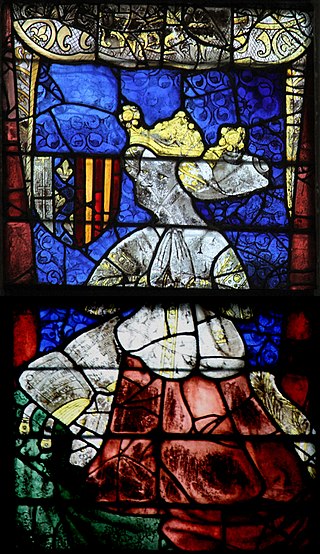
Yolande of Aragon was Duchess of Anjou and Countess of Provence by marriage, who acted as regent of Provence during the minority of her son. She was a daughter of John I of Aragon and his wife Violant of Bar. Yolande played a crucial role in the struggles between France and England, influencing events such as the financing of Joan of Arc's army in 1429 that helped tip the balance in favour of the French. She was also known as Yolanda de Aragón and Violant d'Aragó. Tradition holds that she commissioned the famous Rohan Hours.

The regency government of the Kingdom of England of 1422 to 1437 ruled while Henry VI was a minor. Decisions were made in the king's name by the Regency Council, which was made up of the most important and influential people in the government of England, and dominated by the king's uncle Humphrey, Duke of Gloucester and Bishop Henry Beaufort.

From the 1340s to the 19th century, excluding two brief intervals in the 1360s and the 1420s, the kings and queens of England and Ireland also claimed the throne of France. The claim dates from Edward III, who claimed the French throne in 1340 as the sororal nephew of the last direct Capetian, Charles IV. Edward and his heirs fought the Hundred Years' War to enforce this claim, and were briefly successful in the 1420s under Henry V and Henry VI, but the House of Valois, a cadet branch of the Capetian dynasty, was ultimately victorious and retained control of France, except for Calais and the Channel Islands. English and British monarchs continued to prominently call themselves kings of France, and the French fleur-de-lis was included in the royal arms. This continued until 1801, by which time France no longer had any monarch, having become a republic. The Jacobite claimants, however, did not explicitly relinquish the claim.

Peter II of Alençon, called The Noble, was Count of Alençon from 1361 and Count of Perche from 1377. He was the son of Charles II of Alençon and Maria de la Cerda.

Charles I d'Albret was the Lord of Albret and the Constable of France from 1402 until 1411, and again from 1413 until 1415. He was also the co-commander of the French army at the Battle of Agincourt where he was killed by the English forces led by King Henry V.

Duke of Aubigny is a title that was created in the Peerage of France in 1684. It was granted by King Louis XIV of France to Louise de Kérouaille, the last mistress of King Charles II of England, and to descend to Charles's illegitimate issue by her, namely to the descendants of Charles Lennox, 1st Duke of Richmond, 1st Duke of Lennox (1672–1723) of Goodwood House in Sussex. Louis XIV also granted her the Château de la Verrerie, a former secondary seat of the Stewart Seigneurs d'Aubigny, Franco-Scottish cousins of the Stewart monarchs, seated from 1422 to 1672 at the Château d'Aubigny in the parish and manor of Aubigny-sur-Nère in the ancient province of Berry in France.

Duke of Touraine was a title in the Peerage of France, relating to Touraine.

The former French Catholic diocese of Saint-Pons-de-Thomières existed from 1317 until the French Revolution. Its see at Saint-Pons-de-Thomières in southern France is in the modern department of Hérault. There was the Abbey of St-Pons, founded in 936 by Raymond, Count of Toulouse, who brought there the monks of St-Géraud d'Aurillac.
Louis of Luxembourg;. Bishop of Therouanne 1415–1436, Archbishop of Rouen, 1436, Bishop of Ely 1437, Cardinal.
Events from the 1420s in England.

The dual monarchy of England and France existed during the latter phase of the Hundred Years' War when Charles VII of France and Henry VI of England disputed the succession to the throne of France. It commenced on 21 October 1422 upon the death of King Charles VI of France, who had signed the Treaty of Troyes which gave the French crown to his son-in-law Henry V of England and Henry's heirs. It excluded King Charles's son, the Dauphin Charles, who by right of primogeniture was the heir to the Kingdom of France. Although the Treaty was ratified by the Estates-General of France, the act was a contravention of the French law of succession which decreed that the French crown could not be alienated. Henry VI, son of Henry V, became king of both England and France and was recognized only by the English and Burgundians until 1435 as King Henry II of France. He was crowned King of France on 16 December 1431.